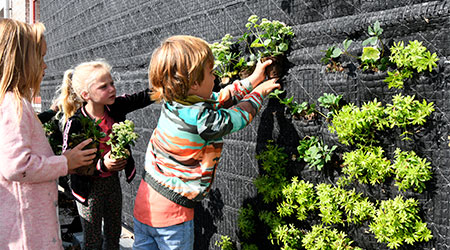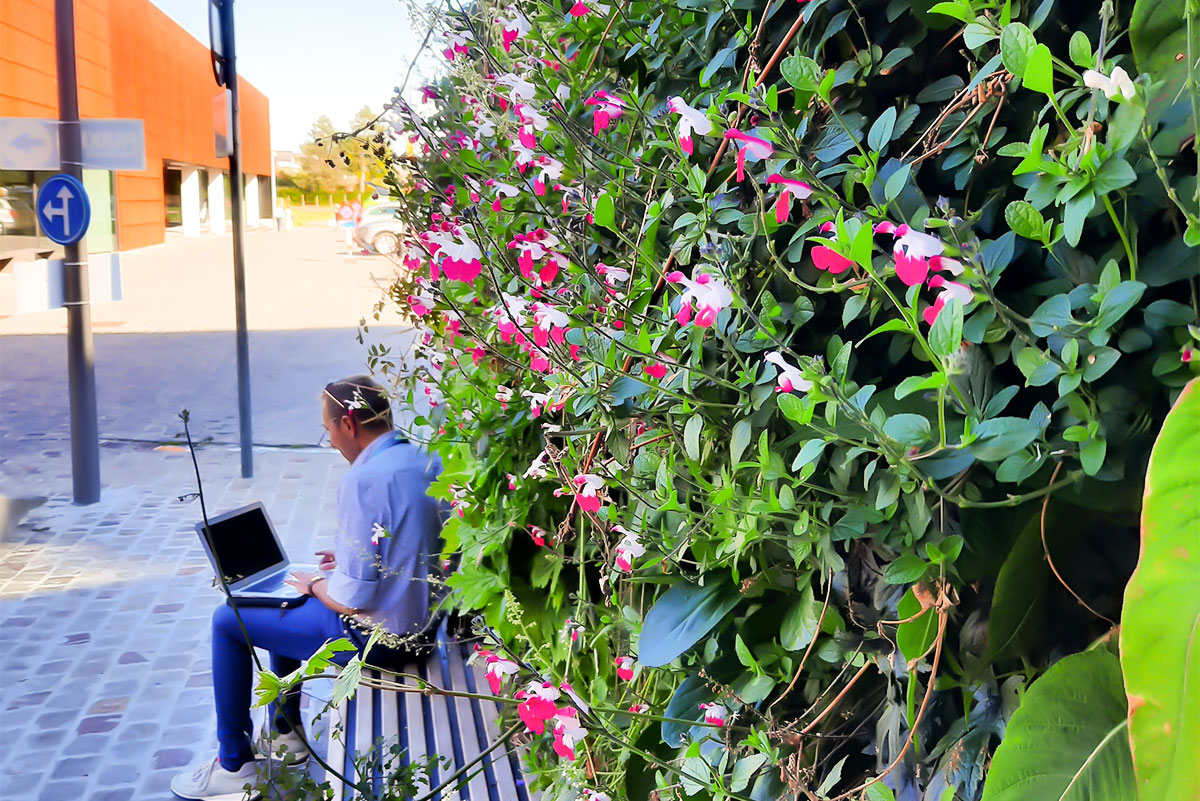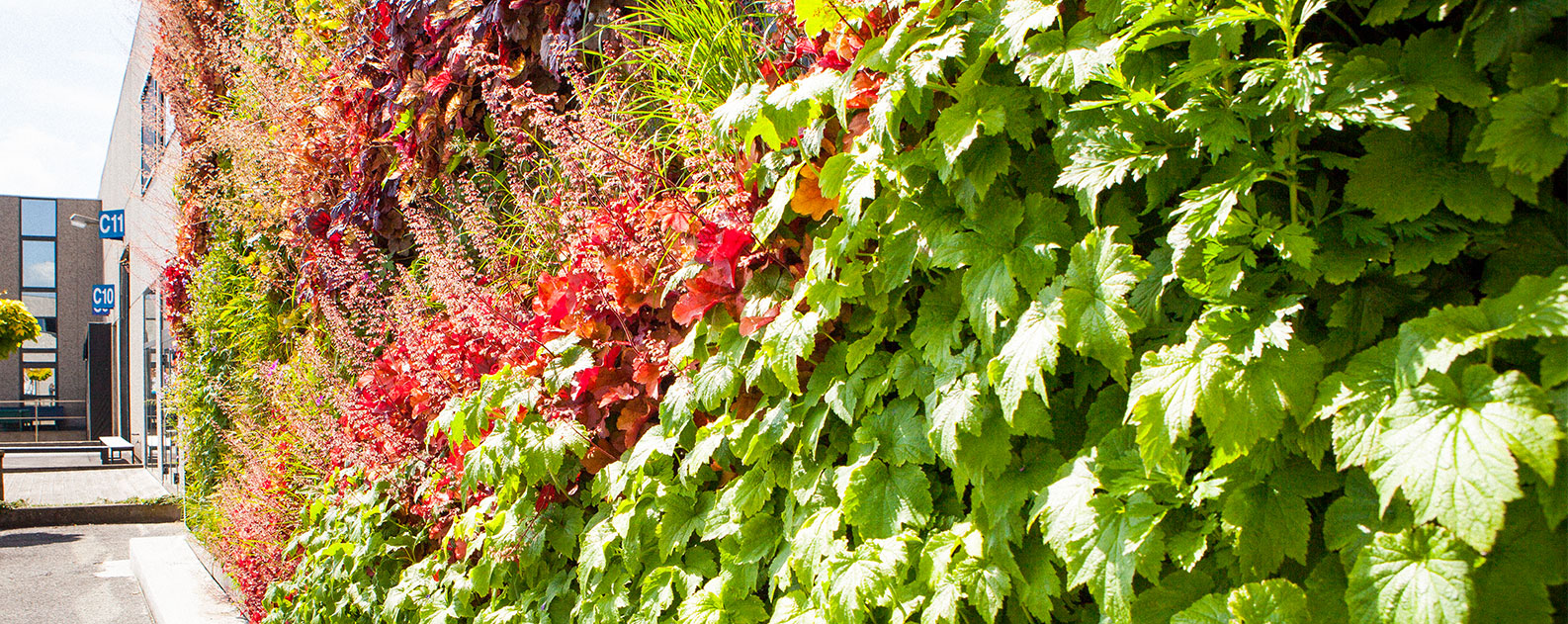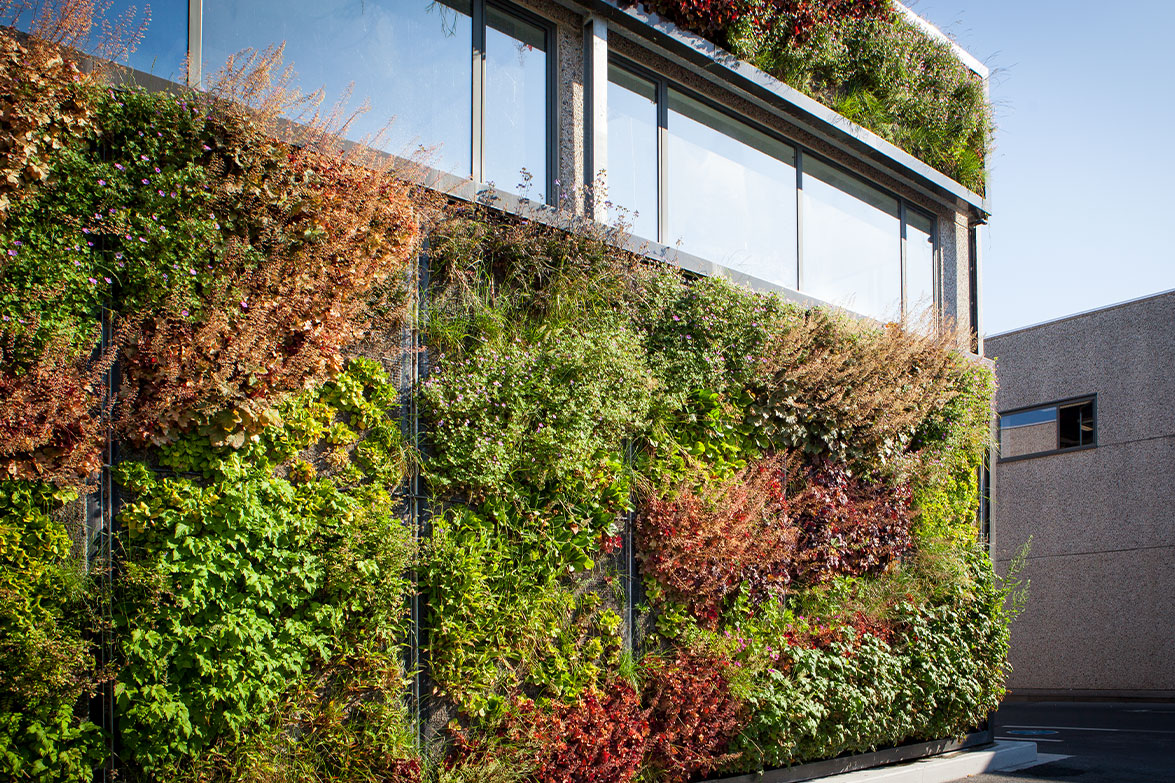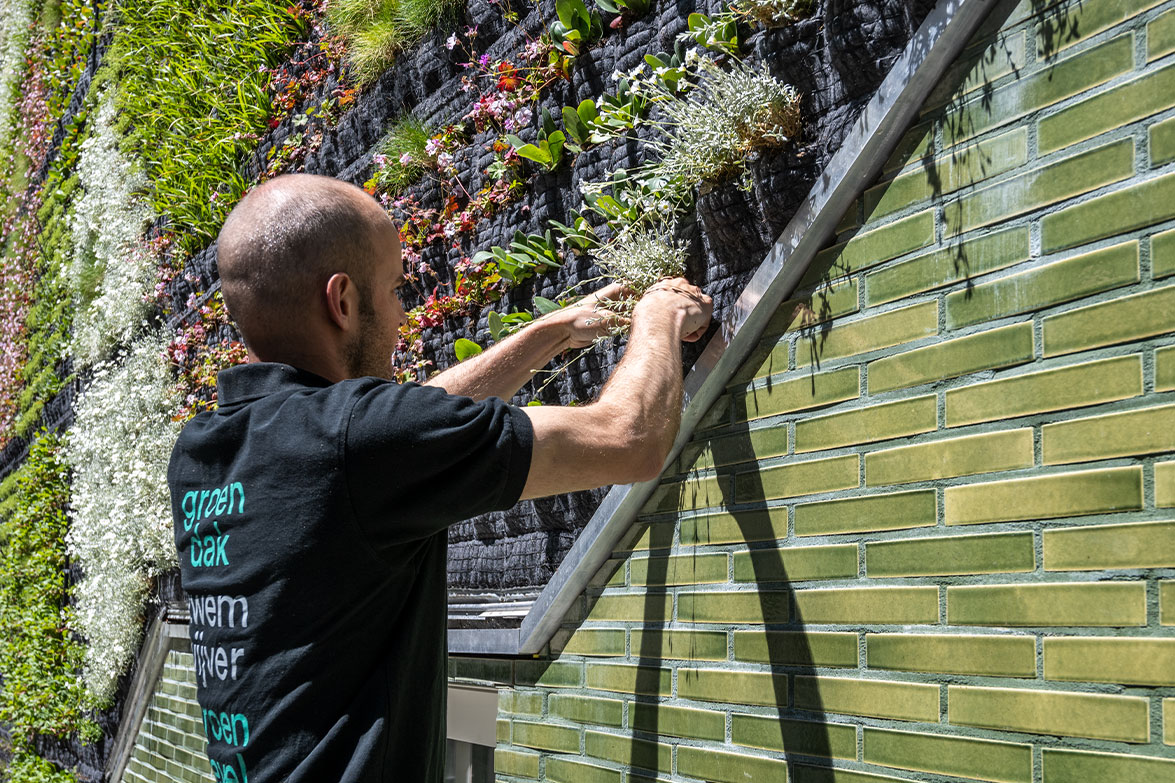The co-benefits of living walls
As a society, we are looking for ways to mitigate and adapt to the effects of climate change. This is called climate adaptation.
Living walls can positively attribute to a building’s sustainability, as green buildings produce fewer emissions and use less energy. Greentexx allows a reduction in energy consumption for cooling and heating of buildings. Installing a living wall is an effective way of reducing heat stress, as it acts as a building skin. It reduces the heat the facades will build up. Thanks to its irrigation system, Greentexx and its plants evaporate water, which has a cooling effect compared to conventional walls.
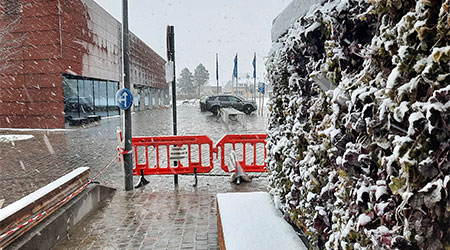
Climate adaptation goes hand in hand with urban biodiversity. Living walls can improve biodiversity. They attract pollinators, such as bees and butterflies, and even birds. While outdoor living walls can serve as resting, feeding, and nesting spots in the city, indoor green walls are protected from pests (like flies and fungus) by biological control agents. Still, you may still find the occasional spider making its web in your indoor green wall.
A living wall also provides thermal insulation and protects the structural elements of your buildings prolonging the buildings’ life. It keeps your building cool in summer and keeps the heat inside in winter. Our indoor green walls even breathe cool air into you buildings. You can feel a cooling soft air flow coming from behind the wall. This cooling air is the result of the cold rainwater.
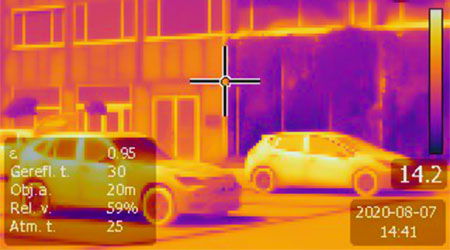
Finally, green surroundings and acoustic dampening effects will improve mental health thanks to the concept of ‘biophilia’. People enjoy to staying in environments with lots of plants, just think of the Japanese tradition of ‘forest bathing’. Green walls can make that happen in your daily urban environment, where you normally don’t have green or vegetation.
